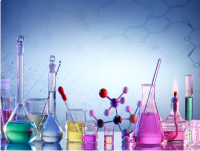A Chemogenetic Approach to Study the Structural Basis of Protein-Facilitated RNA Folding
互联网
399
Large RNA molecules play important roles in all aspects of cellular metabolism ranging from mRNA splicing and protein biosynthesis to regulation of gene expression. In order to correctly perform its function in the cell, an RNA molecule must fold into a complex tertiary structure. Folding of many large RNAs is slow either due to formation of stable misfolded intermediates or due to high contact order or instability of obligate folding intermediates. Therefore many RNAs use protein cofactors to facilitate their folding in vivo. Folding of the yeast mitochondrial group II intron ai5γ to the native state under physiological conditions is facilitated by the protein cofactor Mss116. This chapter describes the use of Nucleotide Analog Interference Mapping (NAIM) to identify specific substructures within the intron molecule that are directly affected by the protein.









